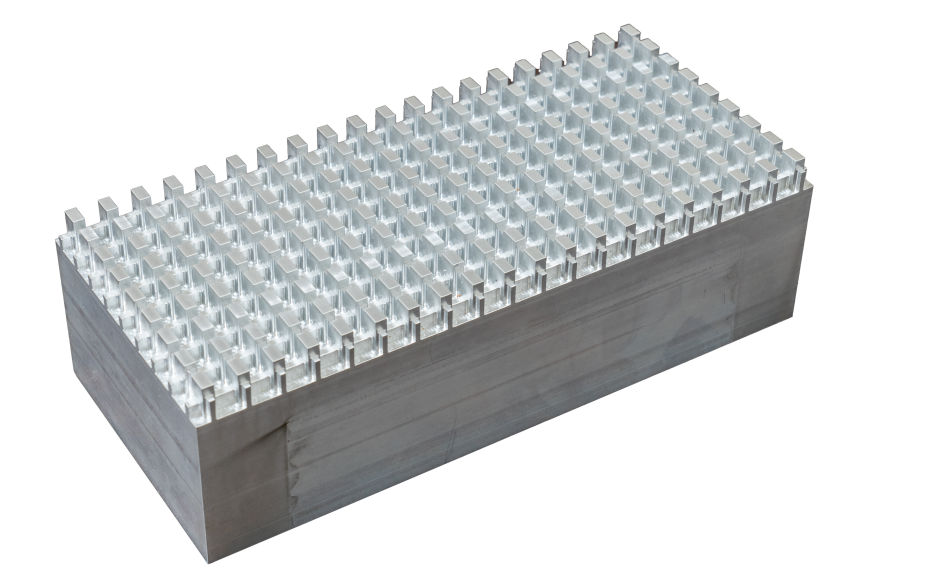Everyday life takes place in three dimensions, or 3D, which are represented by the axes X, Y, and Z, or up and down, left and right, and forward and back. But in recent years, researchers like Guoliang Huang, the Huber and Helen Croft Chair in Engineering at the University of Missouri, have looked at the possibility of a “fourth dimension” (4D), or synthetic dimension, as an addition to the existing physical reality.

A rendering of the new synthetic metamaterial with 4D capabilities designed by scientists at the University of Missouri. It includes the ability to control energy waves on the surface of a solid material. Image Credit: University of Missouri
Huang has now successfully developed a novel synthetic metamaterial with 4D capabilities, including the capacity to manipulate energy waves on the surface of a solid material, in collaboration with a group of scientists from the Structured Materials and Dynamics Lab at the MU College of Engineering. These waves, known as mechanical surface waves, play an important role in how vibrations propagate over the surface of solid objects.
While the team’s discovery is an initial foundation for future scientists to expand on, the material can be scaled up for broader applications in civil engineering, micro-electromechanical systems (MEMS), and national security.
Conventional materials are limited to only three dimensions with an X, Y and Z axis. But now we are building materials in the synthetic dimension, or 4D, which allows us to manipulate the energy wave path to go exactly where we want it to go as it travels from one corner of a material to another.
Guoliang Huang, Huber and Helen Croft Chair Professor, University of Missouri
This ground-breaking finding, known as topological pumping, could one day lead to advances in quantum mechanics and quantum computing by enabling the creation of higher-dimension quantum-mechanical effects.
Huang added, “Most of the energy—90%—from an earthquake happens along the surface of the Earth. Therefore, by covering a pillow-like structure in this material and placing it on the Earth’s surface underneath a building, and it could potentially help keep the structure from collapsing during an earthquake.”
The study expands on previous research conducted by Huang and colleagues that shows how a passive metamaterial could influence the course of sound waves as they go from one corner of a material to another.
Science Advances, a journal of the American Association for the Advancement of Science (AAAS), published the study. The Army Research Office and the Air Force Office of Scientific Research provided funding to support the study.
Journal Reference:
Wang, S., et al. (2023) Smart patterning for topological pumping of elastic surface waves. Science Advances. doi:10.1126/sciadv.adh4310